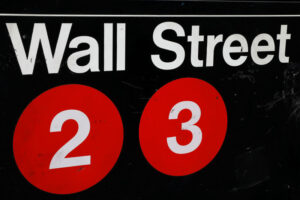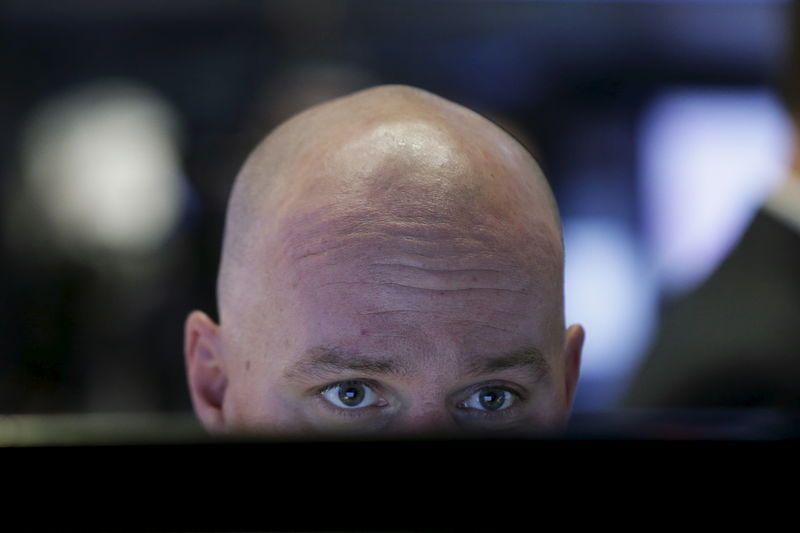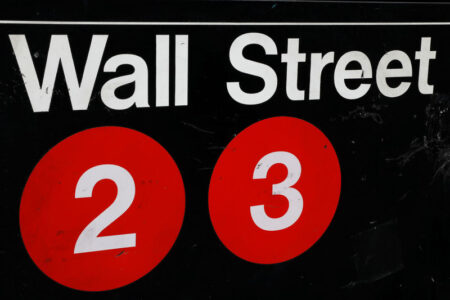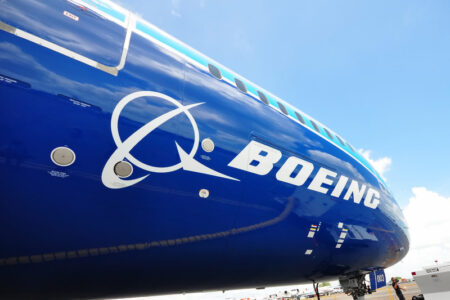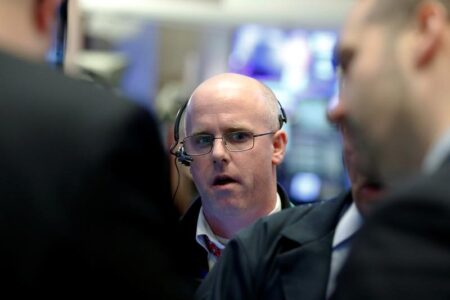Fastenal Company (NASDAQ: NASDAQ:) reported a 3.5% increase in net sales and a 1% rise in earnings per share to $0.52 in its Q3 2024 earnings call. The industrial supply company’s daily sales rate grew by 1.9%, despite disruptions from Hurricane Helene.
Key Takeaways
• Net sales increased by 3.5% year-over-year
• Earnings per share rose 1% to $0.52
• Daily sales rate grew by 1.9%
• Signed 93 new Onsite locations, with active sites up 12%
• eCommerce sales increased by 25.5%
• Digital sales accounted for 61.1% of total sales
Company Outlook
• Fastenal aims to reach 375-400 active Onsite locations
• Anticipates stable fourth quarter performance
• Projects lower CapEx in 2025 compared to current $250 million run rate
• Targets $10 billion in future revenue, adding $1 billion annually
Bullish Highlights
• FMI Technology segment growing faster than Onsite signings
• Eastern U.S. business grew by nearly 5%
• Government account sales saw significant growth
• Over 10% increases in national contracts, Onsite installed base, and FMI installed base
Bearish Highlights
• Operating margin down 70 basis points year-over-year to 20.3%
• Gross margin decreased 100 basis points to 44.9%
• Western U.S. business remained slightly negative
• Increased duties on cross-border shipments from Mexico impacted costs
Q&A Highlights
• Inventory additions from local suppliers aim to enhance customer service
• Gross margin benefits expected to materialize around Q2 to Q3 of 2024
• Company focusing on customer acquisition to indirectly boost Onsite growth
• Analyst Day scheduled for April to outline strategies for achieving revenue goals
Fastenal’s Q3 2024 earnings call revealed a mixed performance with overall growth in sales and earnings per share, despite challenges from Hurricane Helene. The company reported a 3.5% increase in net sales and a 1% rise in earnings per share to $0.52. Daily sales rate grew by 1.9%, with digital sales accounting for 61.1% of total sales, up from 57% a year ago.
CEO Dan Florness highlighted the company’s strategic focus on higher-margin business opportunities and operational flexibility. Fastenal signed 93 new Onsite locations, bringing the total active sites up 12% year-over-year. The company aims to reach 375-400 active Onsite locations in the future.
The FMI Technology segment showed significant growth, with 7,281 devices signed in the quarter, averaging 114 per day. E-commerce sales increased by 25.5%, with eProcurement up over 30%, although web-centric eCommerce lagged in growth.
Fastenal’s performance varied geographically, with the Eastern U.S. business growing by nearly 5%, while the Western U.S. remained slightly negative. The company reported mixed performance across sectors, with weakness in agriculture, consumer durables, and aerospace, but stable conditions in oil and gas.
Looking ahead, Fastenal anticipates a stable fourth quarter, influenced by year-to-date signings benefiting future sales trends. The company projects lower CapEx in 2025 compared to the current $250 million run rate and targets $10 billion in future revenue, aiming to add $1 billion annually.
CFO Holden Lewis addressed gross margin expectations for Q4, suggesting a decline but better performance than typical seasonality due to reduced rebate impacts. He noted that revenue growth above mid-single digits is necessary to leverage margins effectively.
Fastenal plans to outline its strategies for achieving revenue goals at an Analyst Day scheduled for April, coinciding with the annual customer expo. The company remains focused on customer acquisition, contract growth, and enhancing its digital and onsite offerings to drive future growth.
InvestingPro Insights
Fastenal’s Q3 2024 earnings report reveals a company navigating challenges while maintaining growth. To provide additional context, let’s examine some key metrics from InvestingPro.
As of the latest data, Fastenal boasts a market capitalization of $40.08 billion, reflecting its significant presence in the industrial supply sector. The company’s P/E ratio stands at 38.29, indicating that investors are willing to pay a premium for Fastenal’s earnings. This aligns with an InvestingPro Tip that Fastenal is “Trading at a high earnings multiple.”
Fastenal’s revenue for the last twelve months as of Q2 2024 was $7.42 billion, with a modest growth rate of 2.43%. This growth, while positive, is relatively modest compared to the company’s ambitious target of adding $1 billion annually to reach $10 billion in future revenue.
On the profitability front, Fastenal maintains a strong position with a gross profit margin of 45.47% for the last twelve months as of Q2 2024. This robust margin, despite the reported 100 basis point decrease in the recent quarter, supports the company’s ability to navigate cost pressures.
An InvestingPro Tip highlights that Fastenal “Has maintained dividend payments for 32 consecutive years,” which is particularly relevant given the company’s current dividend yield of 2.23%. This consistent dividend history underscores Fastenal’s financial stability and commitment to shareholder returns, even as it invests in growth initiatives like Onsite locations and digital sales channels.
For investors seeking a deeper understanding of Fastenal’s financial health and growth prospects, InvestingPro offers 14 additional tips, providing a comprehensive analysis to inform investment decisions.
Full transcript – Fastenal Company (FAST) Q3 2024:
Operator: Hello, and welcome to the Fastenal 2024 Q3 Earnings Results Conference Call. At this time, all participants are in a listen-only mode. [Operator Instructions] A question-and-answer session will follow the formal presentation. [Operator Instructions] As a reminder, this conference is being recorded. It’s now my pleasure to turn the call over to Taylor Ranta of the Fastenal Company. Please go ahead, Taylor.
Taylor Ranta: Welcome to the Fastenal Company 2024 third quarter earnings conference call. This call will be hosted by Dan Florness, our Chief Executive Officer; Jeff Watts, our President and Chief Sales Officer; and Holden Lewis, our Chief Financial Officer. The call will last for up to one hour, and we will start with a general overview of our quarterly results and operations with the remainder of the time being open for questions and answers. Today’s conference call is a proprietary Fastenal presentation and is being recorded by Fastenal. No reporting reproduction, transmission or distribution of today’s call permitted without Fastenal’s consent. This call is being audio simulcast on the Internet via the Fastenal Investor Relations homepage, investor.fastenal.com. A replay of the webcast will be available on the website until December 1, 2024 at midnight, Central Time. As a reminder, today’s conference call may include statements regarding the company’s future plans and prospects. These statements are based on our current expectations, and we undertake no duty to update them. It is important to note that the company’s actual results may differ materially from those anticipated. Factors that could cause actual results to differ from anticipated results are contained in the company’s latest earnings release and periodic filings with the Securities and Exchange Commission, and we encourage you to review those factors carefully. I would now like to turn the call over to Mr. Dan Florness.
Dan Florness: Thanks, Taylor, and good morning, everybody, and welcome to the Q3 2024 earnings call for Fastenal. Before I start, I just thought I’d share a couple of things. First off, as everybody’s painfully aware of, there’s been several hurricanes that have hit the Southeastern United States in recent weeks, and our hearts go out to all those affected. And each month when we put out our sales release, either I send out a video to our organization or Jeff Watts, our President, sends one out. By the way, in addition to Holden and me being on the call today, Jeff Watts is sitting in, just to get a feel for what it feels like the call on this end. And I told him if we get a really tough question, I’ll send it his way. But all kidding aside, when a hurricane is coming, or any type of weather event or catastrophic situation occurs, we created a Team’s page internally, and it’s really meant to be a very agile way of communicating. We honed the skill incredibly during COVID. But it’s a way of providing information to our team in the field who can get a lot of requests from customers that need help, maybe employees that need help, but people that need help and sometimes locating things when it’s a little chaotic. It’s nice to have one point to go to. There’s two individuals that I mentioned on the video this month. Zach Wise and DaNae Behrens who, in my mind, have gone above and beyond the call in keeping things updated on our system. And I recognized them on the video, and Bob Hopper who leads our business down in Florida, lives in Orlando personally and has been spending the last few days making sure his family is okay, his Fastenal family is okay, and our customers are okay. He sent me an e-mail this morning, thank me for mentioning those two and in echoing the sentiment that they’ve been crucial in our ability to react in this event. So, my thanks to them. I’d also like to announce that — and there’ll be an 8-K that gets filed or something that goes out on this, I’m not sure the details, but yesterday, our Board elected a new officer at Fastenal, Donnalee Papenfuss, she joined us back in July of 1999. So she just hit 25 years with Fastenal. In February of 2014, she became our VP of Contract Development. I’ve worked with her quite a bit over the years and her role has been slowly expanding. As Jeff has stepped into the Chief Sales Officer role, we really took a hard look at our strategy as an organization, defining who we are and where we think the business is going and what does that mean for priorities in the future and getting everybody aligned to that. Donnalee has been an incredible asset in that. And one of her recent things she worked on was our sharing with the world, our approach to ESG. And my congratulations to Donnalee and to everybody that helped Donnalee developed her skill set over the last 25 years and to the team that she leads. Getting to the quarter. Third quarter net sales, plus 3.5%, produced earnings per share of $0.52, up about 1% over a year ago. If you take out the fact that we had — our business today, our daily sales rate grew 1.9%. Some things that stand out on the quarter for me, and one of them is a welcome sign. The quarter finished stronger than it started, especially considering that the hurricane impacted the last few days of the month. And I called out a couple of individuals for communicating. I also want to call out our transportation and distribution groups. The amount of flexibility they exhibited in that Thursday, Friday, Saturday, Sunday, Monday period, the last four, five days of September of changing truck routes, running truck routes on Friday evening, Saturday evening to get the product moved for our customers’ needs was nothing but incredible to witness and so my compliments to them. But the quarter — I thought September would weaken. And we were impacted by it, but we finished the quarter stronger than we started it. Our — when I look at the daily sales rate for September, it really, I believe, points to some very good changes and alignment and some personnel moves that we’ve made in the last 12 to 18 months, and I credit Jeff Watts and his team for some really smart moves. And I believe it’s starting to show through in our numbers. We continue to manage both current conditions and future growth. And the way we thought about it in the July call is we talked about, in a period like this, we manage expenses very tightly, but we still build for the future. Because we don’t think our shareholders want us to be focused on managing sales growth in the low single-digits and the expenses around it. They want us to be thoughtful about it. But the real goal is to not be growing in the lower single-digits. And I think we’re doing a nice job of balancing things. If you look at the headcount that we added, it’s really about the fact that we’re signing Onsites, which really means we’re engaging with customers. Onsite is just one way of measuring that. Our IT group continues to build, and our business analytics continues to build. We’re doing millions of transactions now through our FMI platform. It provides incredible data to be thoughtfully analyzed to provide insight for our customers and for our business. The asset efficiency improvements we made in the last few years allow us to be very flexible and strategic in what we’re doing. During the quarter, and Holden will touch on this a bit in his part of the talk, we added inventory into our distribution network, and we’ll continue to add inventory in Q4 and Q1 into distribution to make — to remove some sourcing activity that occurs at the branch, to improve our cost on that because sometimes that could be a lower-margin business, and to improve our efficiency of supply chain for our customer. The real way of paying for it is we believe we’re more efficient, and we believe we can lower our costs and realize that in margin, and it pays for a return on inventory. I also believe that will help us grow a little bit faster because that inventory will be more readily available. And we can say yes more often and say it easily. Flipping to Page 4. Onsites, we signed 93 in the quarter. Active sites are up about 12% from the end of third quarter ’23. Our goal remains to be in that 375 to 400, based on where we are right now, probably at the lower end of that range. And we’ve had that range for a number of years. We’ve struggled to make it, and it’s not about the range. It’s about the mindset of — the organization that I joined back in 1996, the mantra was always about we’re adding actives and we’re adding dollars per active. It was really about we’re adding account numbers, we’re adding customers with accounts and how much are those customers spending. And we were opening 25%, 30% more branches a year. Over time, that math started to change. And I was talking to a group of — excuse me, district managers, so our leaders in our — what we call our Winona-based region. And I was talking to them earlier in the week. And I shared some perspective with them that I shared with the — with our Board back in April. And it talks to this Onsite, FMI key account acquisition strategy and what drives our growth over time. And I said to them, I said, we’ve added a little over $5 billion since — in the last 16 years. In 2007, we came out and said we’re going to stop opening 14% more branches a year. We’re going to 7%. Six years later, that 7% has slowly trickled down to 1% or 2%, and we actually said we’re going to start consolidating some of our branches because we don’t know that that’s the right strategy going forward. And as we’ve shared in previous calls, we closed about 1,000 locations in that decade. But in that whole time frame that we were slowing the openings and eventually stopping the openings, we had, back in 2007, roughly 2,500, 2,600 customer sites that we supplied to where the customer was sourcing more than $10,000 a month from us. Between 2007 and 2023, we added about 9,400, 9,500 sites. That’s on the map, where we’re doing more than $10,000 a month. That was 93% of our growth in that 16-year period. The other 7% came from customers doing between $5,000 and $10,000 a month. And all the buckets below that, we keep pulling people up into those additional groups. And that’s what really drives. Now we put it on hyperdrive in the last decade with the Onsite expansion that you see here, because today, about 78% of our sales go to those customer sites doing more than $10,000 a month. Half that business is in an Onsite. But it’s about — we’re not adding account numbers, we’re adding customer sites and then what’s our wallet share. One real effective way to add wallet share is a great OEM fastener program. Reason fasteners are still 30% of our sales is because two thirds of that is an OEM fastener. Then we have FMI Technology. We signed 7,281 weighted devices in the third quarter, that’s 114 a day. I remember when we were doing two a day. And then 10 a day and 20 a day. And we always talked about, hey, could we get that — we should build the infrastructure to do 100 a day. The Blue Team, when it comes to FMI Technology, I believe, were crushing it. There’s some challenging aspects. If we’re established in a customer location and their business is off, we feel it directly because we are their supply chain partner. And so that’s created some challenges for us in the current environment. But we’re taking market share at a faster pace as I’ve ever seen in this organization. And I think the FMI Technology is a great proxy for that. And to Jeff Hicks and the team within our Solutions group, my compliments for you for supporting this great Blue Team organization. One realignment we made during the quarter is all of our digital strategy, whether it be the e-commerce, our FMI or what we call FASTCrib, which is essentially a software program that we’ve created, a couple of hundred customers use it today, but a software program that we’ve created for managing the tool crib that customer facing. And those three pieces are under the umbrella now of our FMI digital solutions within Fastenal and Jeff Hicks, along — a 30-plus year employee leads that charge. Speaking of eBusiness, so eCommerce grew about 25.5%. It’s a good news/bad news. Our eProcurement, where supply chain customers are using technology to tell us what they need, that continues to grow 30-some-percent. Our eCommerce, which is much more web-centric, that was single digits. And those trends are part of the reason for realigning that umbrella because when we really study how customers use our web, it’s a very fastener-centered proposition. And we’re trying to get that — we’re really trying to get that better and better aligned to the business. Finally, our digital footprint, 61.1% of our sales went through a digital footprint this quarter, and that was 57% a year ago, 49% the year before that. With that, I’ll shut up and let Holden take a spin.
Holden Lewis: Great. Thanks, Dan, and good morning, everyone. I will begin on Slide 5. As Dan indicated, our daily sales rate in the third quarter of 2024 was up 1.9%. Hurricane Helene, which hit several Southeastern regions late in the quarter, reduced our daily sales rate in the quarter by 5 to 25 basis points. Pricing was still slightly negative, though targeted pricing actions moderated the drag relative to the second quarter of 2024. But the primary challenge remains sluggish end markets. The Purchasing Manager’s Index has been sub-50, indicating manufacturing contraction for 22 of the last 23 months. Industrial production might be best characterized as flattish, but key components for Fastenal such as machinery and fabricated metal remain weaker than the overall index and have posted long strings of monthly declines of their own. We continue to navigate a long and grinding, albeit shallow contraction in the third quarter of 2024. In an otherwise unchanged environment, a couple of elements of the quarter are worth highlighting. First, our reseller end market weakened markedly with daily sales declining 11.3% in the quarter versus declining 6.4% in the second quarter of 2024. It’s not a large segment for Fastenal at roughly 5% of sales in the third quarter of 2024. Still, these customers tend to be wholesalers, dealers, rental firms that sit between producers and OEMs and the weakness suggest that there was channel destocking in the period. Second, our September daily sales rate improved to up 3.2% despite a 35 to 55 basis point negative impact from the hurricane in the month and moderating growth in our warehousing end market, where mid-teens September growth was roughly half the July and August growth rate as we begin to hit tougher comparisons. This is accompanied by what I would call a mixed tone from regional leadership, which is an improvement on the universal pessimism of preceding months. Now, one month does not make a trend, still coming against another strong quarter for contract, FMI and Onsite signings, momentum does seem to be building around changes aimed at improving customer acquisition. The improved tone from regional leadership seems to reflect a willingness on the part of the marketplace to look past the November elections and into the first half of 2025. Still, in the immediate term, many markets remain weak, the PMI continues to flash pessimism and there is uncertainty over what plant shutdowns might look like during the November and December holiday seasons. We aren’t expecting much change from underlying business activity in the fourth quarter of 2024. However, we do believe the strong year-to-date signings should benefit sales trends in the fourth quarter of 2024 and into 2025. Now to Slide 6. Operating margin in the third quarter of 2024 was 20.3%, down 70 basis points year-to-year. Gross margin in the third quarter of 2024 was 44.9%, down 100 basis points from the year-ago period. Product and customer mix played its customary role. Two elements of our logistical operations also weighed on the margin. First, certain countries have raised import duties, lifting the cost to us of moving product across borders. Second, we received a shipper rebate in the third quarter of 2023, which did not recur in the current quarter. And then finally, we are experiencing lower supplier rebates as sustained slow demand has reduced our purchasing activity relative to last year. Price/cost did not materially impact the third quarter of 2024. Moving to operating costs. SG&A was 24.6% of sales in the third quarter of 2024, improved from 25% in the year-ago period. The most notable contributor to the leverage was an increase in supplier marketing credits. Otherwise, it was an accumulation of modest leverage in many areas, including selling related transportation from lower fuel costs, IT spending, bad debt expense and general insurance costs. Year-to-date, our SG&A is up 2.8%, which is above our DSR of up 1.9% over the same period, which contributes to the 60 basis points of margin compression over the period. Our goal remains to prioritize balancing cost management with growth investments. For example, in the third quarter of 2024, our FTE was up 2.8%, above our daily sales rate of up 1.9%. However, we’ve invested, as Dan indicated, in Onsite personnel to support our strong signings momentum as well as in IT and business analytics, all areas we think are critical to future growth. If we remove these additions, our FTE growth was 1%, which trails our DSR growth. Similarly, our total discretionary cost category was up 3.7% in the third quarter of 2024, again, above our daily sales rate. But if you remove sales-related travel, which I believe is contributing to the improved signings we’ve experienced in 2024, then remaining spending on non-sales travel, meals and supplies was down 8.7%. Viewed in this context, we believe we are effectively managing expenses and expect to leverage when growth accelerates. We intend to remain tight with costs in the fourth quarter of 2024, given continued sluggish end market demand. Putting everything together, we reported third quarter 2024 EPS of $0.52, which matches the $0.52 from the third quarter of 2023. Now turning to Slide 7. We generated $297 million in operating cash in the third quarter of 2024, which was 100% of net income. With good cash generation in a soft demand environment, we continue to carry a conservatively capitalized balance sheet with debt being 6.3% of total capital, down from 7% of total capital at the end of the third quarter of 2023. Accounts receivable were up 2.5%, reflecting sales growth and a shift towards larger customers, which tend to have longer terms. Inventories were up 3%, this is the first annual increase since the first quarter of 2023. Two things are playing out here. First, the third quarter of 2024 is the first quarter since the supply chain crisis where we are no longer comparing to elevated levels of inventory. Second, we began adding incremental inventory, primarily of fasteners, to improve availability to our in-market locations and reduce sourcing through less cost-effective channels. This is also intended to support picking efficiency programs in our distribution centers. We added roughly $25 million in new inventory for these purposes in the third quarter of 2024 and anticipating adding another $5 million to $10 million in the fourth quarter of 2024. Net capital spending in the third quarter of 2024 was $55.8 million, up from $42.9 million in the third quarter of 2023. Our full year anticipated net capital spending range remains $235 million to $255 million, though we currently are trending towards the bottom of this range. The projected increase in net capital spending for the full year of 2024 is driven by higher outlays for hub automation and capacity, the substantial completion of an upgraded distribution center in Utah and an increase in FMI spend to support increased signings. With that, operator, we’ll turn it over to begin the Q&A.
Operator: [Operator Instructions] Our first question is coming from Ryan Merkel from William Blair. Your line is now live.
Ryan Merkel: Hey, good morning. Thanks for taking the question. I wanted to start with September. I know it’s one month, but finished stronger. You feel like some of the moves you’ve made are starting to lead to more new customer adds. Do you feel like you’ve turned a corner here and we should expect that we’ll see outgrowth improve going-forward?
Holden Lewis: Hey, Ryan, good morning and thanks for the question. I personally believe we’ve turned a corner. We — when you make — we made a lot of changes in 2023 and early part of 2024. And like in any organization, changes are distracting. And when I look at the tools we put in place and more importantly, the leaders we put in place to get everybody aligned down the same path, I feel good that we’re focused and I do expect outgrowth as we move into 2025.
Ryan Merkel: Okay. Great to hear. And then maybe the second one for Holden. Just on gross margin, how should we think about 4Q? Usually, seasonality is down 30 basis points, but there was a bit of noise in 3Q. So just curious if you can provide any help there.
Holden Lewis: Yeah. If I — as you said, the seasonality typically is about 30 basis points. I actually think we’ll do a little bit better than traditional seasonality in the fourth quarter. I mean, I do believe that we’ll still see some decline in gross margin from where we were in the third. But there’s a number of things, I think, particularly when I look at the impact of the lower rebates on gross margin in Q3. When you — when — I don’t believe that the impact of that is going to be as significant in Q4 as we saw in Q3. And so there’s probably a couple of million dollar swing that plays out that benefits the gross margin in Q4. So, yeah, you’re right about the seasonality. I think there’ll be a little seasonality that asserts itself, but I think that we will have some offsets to that, that moderates it.
Operator: Thank you. Next question is coming from Ken Newman from KeyBanc Capital Markets. Your line is now live.
Ken Newman: Hey, good morning. Thanks for taking the call, the question I should say. Holden, just thinking about the margins here and obviously you’ve got some impact you called out from negative mix and rebates and then you just answered the question on seasonality here. As you think about some of the cost actions you’ve taken here recently over the last 12 or 18 months, what do you think is now the minimum level of sales growth to kind of get you back to that historical low 20% incremental margin?
Holden Lewis: Well, hopefully, the message you’ve received is that, whereas we have been tight with certain expenses, we’ve also invested in other expenses. And if you get to or when we get to a period where you have strong growth again, then obviously some of those expenses we’ve been tightly controlling, we’ll still tightly control, but they’ll clearly move upwards, right? I don’t know that our overall profile has changed, right? We’ve reacted to the cycle. But I still believe that as we get revenue north of — revenue growth north of mid-single-digits, that’s where I begin — that’s where I think we begin to leverage again. I don’t think that that level has necessarily changed. Where that level would change is if we began to rethink how we invest in our business, that we have not done. So, as long as we continue to take the approach of investing in our business, investing in growth, I think the overall profile is similar. If you’re below mid-single-digit growth, it’s going to be difficult to leverage. If you’re above mid-single-digit growth, we should be expect ourselves to leverage the P&L and grow our margins. That hasn’t changed.
Dan Florness: One element that comes into play, if growth improves, one of the things that would drive that is our fastener performance improves, particularly the MRO. But that tends to be a friend when it comes to gross margin. And it tends to be a friend when it comes to, with the efficiencies we’ve introduced and I believe some of the recent efficiencies that we’re introducing with the expanded fastener inventory and distribution, it allows us to also not just get the gross margin of friendship, but the — it’s more operating efficient if we have it on the shelf.
Ken Newman: Right. No, that makes sense. And maybe just for my follow-up, just as a — kind of tagging on to the end of your comment there, Dan. I know the visibility into the channel can be difficult to track from end market to end market, just given the nature of fastener inventories. But I’m curious if you could or if you have any color on some of the other moving pieces from a heavy manufacturing perspective, whether it’s automotive or OE Aerospace with the Boeing (NYSE:) strike going on, and if there’s any way to kind of parse out what impacts or how you view those moves in coming quarters?
Dan Florness: Well, our visibility, we’ve always joked that it’s about eight hours. But we do have one indicator of visibility and that’s ISM. And that’s not giving us any help. The one thing that does come into play, that makes me a little bit more bullish when I look out into 2025 and time will tell if I’m a naive fool or if I’m accurate on it. And that is, since November ’22, our customers’ business took a step-down. So you take a step-down from ’22 to ’23, you take a step-down from ’23 to ’24, then you start asking yourself from ’24 to ’25, we don’t need the business to go back to what it was in ’22 or even what it was in ’23. But you ask yourself, what’s the probability of it taking another step-down and creating a whole bunch of headwinds for us or the probability of it being staying the same, a weaker environment, but staying the same or marginally improving. Again, not going back, but just marginally improving. Of those three scenarios, personally, I think the second and third have a greater probability, one or the other than the first. That’s our friend when we go into 2025, because then our growth shines through. I often cite some stats. We do millions of transactions now through FMI. So I’ll use what we call FASTStock. That’s where we’re going out with our scanning device and we’re scanning bins. In January, we did 16,387 orders every day and our average order was $224. So we go out with FASTBin bins, $224 we bring out a day or two later. By May, that $224 had dropped to $214. That’s the bad news. And the — from May to September, that $214 has risen to $216. Now I don’t know what it’s going to be in October, what’s going to be in January. But right now, from January to September, it’s down about 11.5%, which means we have — today, we have 18,290 scans a day. So we’re doing an 11.5% more scan. So we either — we have more customers where we’re providing the service, 11.5% more. But the contraction in spend per customer is wiping out 31% of our growth. If we don’t wipe out 31% of our growth because $216 goes to $210 or $208, that’s a different number. And if I do the math on next year, if we’re doing 20,000 a day in the first quarter, just a number, that’s based on the $216, that’s $91 million a month, 420,000 scans in a 21-day month. If that $216 stays there, it’s $91 million. If it drops 3.5% or 3%, 11%, whatever, you know the math there. If it goes back to $224, that adds $3 million a month to our revenue. That’s like for the year, getting another calendar day because we do $31 million a day, and that’s $36 million. Sorry to get really wonky on you there, but it really changes the math quite dramatically if things just stabilize or tick up slightly because we’re adding customers. We’re taking market share. Just — it would be nice to have more than 70% of it shining through or 60% or 40% of it shining through because of contraction.
Holden Lewis: And I will say, to follow up on that, there were a couple of markets that stood out in regional leadership’s commentary. Ag is very weak. And I think our expectation is there’s going to be extended shutdowns in ag over the course of the fourth quarter. Consumer durable categories are fairly weak, were called out in a number of cases. And then pulp, paper and lumber was also called out. We are seeing some effects of Boeing in the aerospace side as well. So those are four areas that were called out. Nothing — oil and gas is still fairly stable and doing decently, and those are probably the call-outs. So not comprehensive by any means, but a few things that were mentioned by the field.
Operator: Thank you. Next question is coming from Tommy Moll from Stephens. Your line is now live.
Tommy Moll: Good morning, and thank you for taking my questions.
Dan Florness: Good morning.
Holden Lewis: Good morning.
Tommy Moll: I wanted to touch on September. Do you sense that there was any help from the macro there? Or would you attribute all or substantially all of the benefit from market share? And on the market share point, were there some big things that fell your way? Or does it feel more like an accumulation of a bunch of little things that have been in process for some time? Thank you.
Holden Lewis: Yeah. On the markets, again, I think mix is the right expression for it. If I think, for instance, about our Midwestern markets in particular, a couple of them actually said, if anything, it was a little bit weaker in September than what we had seen proceeding. But then there are a whole bunch of markets that kind of said, it was kind of stable. A couple said that maybe there was a little bit of improvement. So when we say that, that was mixed, that was the feeling. Now I would say the last few quarters have been more universally pessimistic. So it does represent an uptick of sentiment, if you will. But I do believe that the feedback from the field, though, was that overwhelmingly, the degree to which we’re seeing improvement has to do with the new customers that we have added and the process of implementing them, bringing them on and getting to revenue. And so yeah, end markets, mixed. The benefits we’re seeing have a lot more to do with the things that we’re doing and the traction we’re gaining there. I don’t have a reason to believe that September was unusual in that regard for any reason. I think we spent the balance of this year seeing our contracts grow. That’s not only at the national account level, but I think the work that’s being done in the field to sign contracts at that level, that’s also been growing quite nicely. That’s manifest in Onsite signings, FMI signings. I just think you’re seeing, as you said, the accumulated impact of those things playing through. And that’s why, as Dan indicated, we’re excited about what’s coming down the pike. Again, fourth quarter can always be tricky. But I think that the trend line going out of fourth quarter into 2025 is a really solid trend line in those areas.
Dan Florness: The only thing I’ll add to that, one — some things that stood up for me when I was looking at September. And these are relatively small pieces, but they’re ones where I’m probably more dialed into it because I’m sensitive to it. And that is we made some changes to our branch — how we operate at the branch location. And as a result, we have some fall off in different customer groups, some of our smaller customer groups because our — we changed how we stock the front room.
Holden Lewis: This is in recent years, not just in…
Dan Florness: Recent years. But as a result, our construction business has been negative for quite a few quarters. And in September, it grew 1%, 0.9% to be exact. And is that a moral victory? Well, the fact that there isn’t a bracket around it is a moral victory. And I believe that means that change has anniversaried itself. And now the question is, what is that industry doing? Again, that’s a relatively small piece of our business. But you know what, I want growth with every customer segment we have. Another one that stood out, our government accounts grew quite a bit in September. Sometimes government business can do that because of the federal government and when their year-end is and budgets and all that kind of stuff. We don’t have much federal business to speak of. Ours are state and local. We had a very strong September. Time will tell if that has legs to it. When I dug into the numbers, it was about our Onsite signings. It was about that chunk of the business that really gave it a lift because it’s — again, it’s about 4% of our sales is government. And in the US, it’s about 5% of our business. So — but there was something that stood out there, but it didn’t change the fact that we ended the quarter stronger than how we started the quarter.
Tommy Moll: And just sticking with the theme of Onsites and market share, Dan, you’ve been very explicit in recent quarters about some of the personnel changes that were made and the redoubling of efforts to drive those Onsite signings higher. You touched on it a little bit today, but any more detail you can give us about the maturity of those initiatives? And in particular, any regional insight would be helpful as well. Thank you.
Dan Florness: Yeah. Well, the maturity of both Onsite and our FMI is quite strong. There’s incredible — our average district manager has 58 dots on the map in their geography that we believe is sufficient to warrant and Onsite, and for us, that means 100,000 plus of revenue a month, is kind of that guiding figure. One of the things that we’ve talked a lot about, and as we move into 2025, we’ll talk to this — to our shareholders and the investment community, analyst community, a lot about is what’s the best way to tell our story. One thing that we’ve done for years is we started as — and I was CFO prior to my current job. So I have a good recollection of some of the steps and changes how we told the story over time. In 2007, we started talking about pathway to profit. 2011, we started to actually talk about something we’ve been doing for three, four years, and that was vending. And we felt it’s big enough to talk about because in all honestly, the first seven or eight years that we had vending, who even knows what the heck we were doing. We get to the end of the year, and we knew that of the vending devices we had deployed that year, 25% to 30% of them, we’re going to pull out because they were just — they were dumb mistakes. And it was learning mistakes. And I’m glad we went through it. Today, when we put a vending machine out, not only do I feel really good, it’s a good signing, I feel good that we put in the right number of devices, that this customer should have 10 machines and we don’t find out six months later, well, it should be six and we pull four out. Does that still happen? Sure. But we’ve really gotten good at it. And so over time, we’ve changed how we tell the story. A number of years ago, we started talking about our digital footprint because it was really talking about our service model and how we go to market. In the last two years, we’ve been building internally, the capability to not look at our business account number by account number, but customer by customer. We’ve done that for years with our national accounts, but it takes a small army of people to take our computer systems that weren’t designed for that type of business and link all these account numbers and tell the story of what’s going on with our national accounts. But it doesn’t allow us to do it for that customer in a district that has 10 account numbers because they have two manufacturing plants in Southern Indiana. And so the district manager knows it, but we can’t support the DM in the way we want to do that. So one of the challenges that really laid out is, that’s build infrastructure to do that. We’ve been doing that for the last two years. And so when I started — when I talked about where our growth comes from in a number of customer sites, and that’s not Onsite, that’s just a building, a dot on the map where we’re selling to one customer, whether we have one account number or 10 account numbers, we think about it to how we serve that customer. That’s really what we should be telling our story about. And how do we craft that? In other words, telling you here’s how many customers we’ve added. Here’s how many of those customers do less than 5,000 a month. Here’s how many of those customers do 5,000 to 10,000, 10,000 to 50,000, 50,000 plus, 100,000 plus. And what’s our strategy for going after each of those customers to be a great supply chain partner for that customer’s needs. And I think as we go into 2025, frankly, I think it won’t be too distant in the future. And I’d be careful how I say this because I don’t want to send a message internally to confuse people. But I think we’ll talk more about customer acquisition and customer maturity and how we’re growing the business and less about, hey, we’ve signed 104 Onsites this quarter. Because I think that’s a better story to tell because it’s easier to understand, frankly, it’s probably easier for this group to model the business and understand what’s driving success, what’s creating headwinds either for ourselves or the economy is delivering to us. Because sometimes you don’t do yourself any favors. And sometimes it’s a case of you’re executing under the hood, but the headwinds are too strong. And I think it’s a better story. Even some of the stuff and maybe it’s a little wonky, we talk about, hey, when we’re out scanning bins, every time we scan a bin, it’s $8 more or it’s $8 less. That tells a lot about what’s going on in the economy because those bins are at 5,000, 10,000, 15,000 dots across the planet. I don’t think there’s a better indicator of economic activity than that. I still think the PMI is a great forward-looking indicator. We’re a great real-time indicator.
Holden Lewis: And just to make sure, I mean, I addressed a little bit of the nuance of the question. The changes that were made and the investments that are being made, we’re not about driving Onsite to 375 to 400, just to be clear. It was about driving customer acquisition. We need to recognize that Onsite growth is a byproduct of winning new customers. Not every new customer has an Onsite. Many of them do because it’s such an incredibly valuable tool and that’ where the signings come from, but it’s the wins that we’re having in our national account contract signings, in our regional account contract signings, our government account contract signing, it’s wins there that the investments were intended to drive and it’s the effectiveness that we’re seeing there that’s better Onsite signings, better FMI signings. So just make sure you understand what the real driver is.
Operator: Thank you. Next question is coming from Stephen Volkmann from Jefferies. Your line is now live.
Stephen Volkmann: Thank you, guys. I had a couple of quick follow-ups. Dan, you mentioned that you’ve kind of anniversaried the headwinds in the branches, but I know you guys were really focused on trying to get those branches growing again. Has that happened yet? Or could it happen maybe in ’25? What’s the outlook for that?
Dan Florness: I expect it to happen in ’25. And there’s a couple of things. We’re very crisp about measuring when there’s cannibalization because of an Onsite signing. But I expect it to happen because once you get to the point, you’ve kind of anniversaried the change, and we still have — there’s two stories going on inside of Fastenal when I think of the US-based business. And I touched on it this morning with our RVPs and VPs on the call. And that is this transition has started faster. During COVID, the transition had started a little bit faster in our Eastern business unit. And when you look at September, for example, our business in the United States grew 2.5%, I don’t have the numbers in front of me, but two and change. In the Eastern United States, we grew almost 5%. We grew 4.9%. In the Western United States, and our definition of West is draw a line from the East — from Detroit down to just the Western tip of Texas. And so Wisconsin, Minnesota, Iowa, Missouri, down to New Mexico. That’s all in what we call the West and everything else would be in the East. So that’s just the way we’ve defined it internally. It’s a lot better than it used to be. Southern Cal was in the East, but that’s kind of like the big 10. But all kidding aside, the business in the Eastern US has grown about 5% right now. And the business in the Western US is slightly negative, and it’s been slightly negative for a number of quarters. That’s just — that’s really about who’s anniversaried it and who hasn’t. So we still have a little — we still have a little bit of a lingering effect in the Western US, and we have a lot of revenue in the Western US. But I feel good about what that means for the branch side of our business as we move forward. We’ve also gotten really dialed in — if I think of some of the changes that our sales leadership has made, we’re better aligned with our national accounts group, region by region, than we’ve been in years. We’re better aligned with the role we call our CSC, it’s a customer service consultant — sales consultant, excuse me. And we have those now in a large, large piece of our district manager group. And where we don’t, we’re weeks and months away. And that really allows us to be very, very focused locally to go after the market. And that’s going to help our Onsite signings, but frankly, it’s probably going to help the branches more because it’s going to allow us to be more aggressive going after that customer — that building there that could be a $25,000 a month customer. But sometimes when you’re really busy, maybe we’re not being consistently calling on that the way we should, and it really dials you in. I also want to say what makes me feel better about the — both the branch and the Onsite side of the business. Bill Drazkowski was Head of National Accounts starting about 2014, I believe that’s what it was. Prior to that, he was our Regional Vice President in what we call the Winona region. He took over national accounts. Yours truly, who’s speaking right now, pulled him out of that role and put him in a different role in 2019. And Jeff Watts in 2023 asked if we could put him — actually suggested, he’s Canadian so I give him that time he’s asking. He suggested that Bill go back into the role. Great move on Jeff’s part. Bill is naturally talented in that area. And his team responds to him — incredible talent there. They’re responding really well, makes me feel really good because we’re — the contract signings that Holden talked about, big chunk of that is related to what our national accounts team is doing, and they’re really executing well right now.
Stephen Volkmann: Okay. Great. And just a quick follow-up. You mentioned, Holden, adding some inventory, maybe giving you a little bit of cost benefit. I’m just curious if it’s enough that we should be thinking about gross margin tailwind from that or is that more of a rounding error?
Holden Lewis: The — there should be a gross margin tailwind from that, but we’ll have several quarters to discuss it. The reality is importing fasteners is a multi-quarter process. And by the time that begins — we’re actually adding the inventory currently from local suppliers to make sure that the availability is high because that’s a big part of why we’re doing this. Just to make it easier, as Dan indicated, for the branches to get product faster, helps customer service, helps us grow. So we’re — currently, we’re adding that through domestic sources. There’s not a lot of cost benefit to that. We are currently placing orders with our import partners to send that product overseas. That’s going to take several quarters. So I don’t think you’re going to start to see the benefits or the tailwinds of that until you probably get into maybe Q2 next year, but probably more like Q3 next year.
Operator: Thank you. Next question is coming from Nigel Coe from Wolfe Research. Your line is now live.
Nigel Coe: Thank you. Good morning. We’ve covered a lot of ground, but I did want to, Holden, maybe go back to some of the gross margin dynamics. And you called out in the PR, Mexico duties — higher Mexican duties. And I’m not quite sure what that means. Just curious in terms of what’s driving that? Is that something that’s going to recur going forward?
Holden Lewis: Mexico really over the past 12 months, but they’ve even done some in the — I think, the past three to six months, they’ve been very much more active in charging duties on product that moves across the border. Now, if you understand our logistics, we ship a lot of product from the US to Canada to Mexico to Europe, et cetera. And so the current Mexico system has a significantly higher charge for those movements than was the case 12 months ago. And so we’re feeling the effect of that. Canada has some as well, specifically on gloves that are up meaningfully. And so just really in the last, call it, six to 12 months, you’ve seen a number of federal authorities in other countries simply raise the cost of moving product across borders. And that was a meaningful impact on the quarter.
Dan Florness: The planet is more provincial than it was 10 years ago.
Nigel Coe: Okay. I thought we had a free trade agreement, but maybe I’m wrong there. So this is because duty rates are increasing, not because there’s more product coming across the border?
Dan Florness: Yeah. Keep in mind that the free trade agreement, we’re not necessarily talking about product that’s going from country to country. We’re talking product that’s not maybe natively from North America.
Nigel Coe: Okay. Got it. Okay. That’s interesting. And then just a quick one on sort of like — I know 2025 is next year, but how do we think about the working capital sort of investments and maybe CapEx into ’25? Do you think that $250 million or so is a good run rate for CapEx? And what do you expect working capital to be use of funds?
Holden Lewis: We haven’t had those conversations to budget the CapEx. But I mean, CapEx, generally speaking, is volatile related to whatever investments you’re making in the hub. And the reality is a significant proportion, probably half of the investment we’re making in our hub category of CapEx this year is related to the construction of our Utah hub. We have a hub in Utah today, smaller lease, not automated. That business has gotten big enough that we can invest in a larger, more automated facility. That’s what we’re doing this year. There’ll be a little bit more expense falling into next year related to that. But I think most of it falls into this year. And so I think you would expect that to step back. So I would expect that $250 million is probably a little bit higher than I would expect for next year. But again, we haven’t had those conversations yet with the various departments. So I’ll have more detail when we convene three months from now.
Dan Florness: When that question came up with the Board yesterday, the only added twist I’ll put in there, as I said to the Board, when I think of the number, and Holden has done a wonderful job of really challenging us of where we — pour on the investment where it makes sense, but also challenging us on where it doesn’t. And for me, the guidepost has been, we are going to spend about 3% of sales, I think, over time, and our cash flow really supports that. And about a third of that is because of FMI. And the nice thing about that is that’s a great business for us. A decade ago, when we were still trying to figure out up and down of what the heck that vending meant, it was a drag to our P&L. It was a drag to our returns. The fact that inventory turns a lot faster than a vending machine, you can make that capital investment. And so the cost of the shelf, whether it’s a vending machine shelf or a shelf on an Onsite or shelf in the branch, the cost of that vending shelf as a percentage of sales is as good, if not better than the company. So it’s a great business because it’s a great tool for our customer. They like that as part of the supply chain. For customers that have vending, usually about a third of the revenue goes through the vending machines and two-thirds is outside of vending machine. So it’s a tool in that supply chain. Some stuff’s in the tool crib, some stuff’s in a bin stock, some stuff’s in a vending machine. So it’s a great way with our Blue Team in the field to be an incredibly, strong supply chain partner to our customers. So a third of the — of CapEx goes into FMI. About 40% goes into distribution and transportation. And then the remaining chunk is really about what we’re spending on IT. We have an incredible team there. We’re going to continue to pour love and investment into that group, and that was some of our headcount growth during the year, and it’s on all the other stuff goes on in life. But that’s really what breaks out. But 3% is a number to me. And fortunately, we have a better CFO today than we did 10 years ago. And that number is sub-3% because he challenges us to get rid of stuff we don’t need and to really optimize.
Holden Lewis: And if you want to plug something, Nigel, I would tell you, it’s probably between $200 million and $225 million is a better number. And congratulations, you just kicked off our internal conversations.
Operator: Thank you. Next question is coming from Chris Snyder from Morgan Stanley. Your line is now live.
Chris Snyder: Thank you. I wanted to follow up on the bifurcation between Onsite signings flat in Q3 and then FMI signings up 20%. Is this more so driven by increasing penetration at existing customers? Or when you guys are adding customers, they’re larger? Or is it that the customers you’re adding are just not — it’s not coming through via the Onsite? Just kind of more color on that 20% spread would be helpful. Thank you.
Holden Lewis: Couple of things from me. One, Onsites are inherently more lumpy. The amount of investment that goes into getting an Onsite from signing through implementation to revenue generation, it’s not an enormous amount of cost. It is a fair bit of energy that goes into that on our part as well as the customer’s part, right? And that’s not the same degree as FMI. So in many cases, customers who are not in an Onsite still want to deploy FMI, right? And I think that’s the broader point. There — we deploy a lot of FMI hardware at locations that are not Onsites. And so I would point out, again, what you’re seeing, and I would focus on the installed base, you’re seeing a better than 10% growth in our national contracts, you’re seeing better than 10% growth in our Onsite installed base, and you’re seeing better than 10% growth in your FMI installed base. I would tell you those things feel like they’re fairly consistent to me. The month-to-month orders in Onsite, that can be lumpy. And I guess I’m not seeing the disconnect that you’re asking about.
Dan Florness: The — a couple of things I’ll point out. I think the delta is more a statement about FMI and the success we’re seeing. So, our FMI team will probably cringe because I’m shooting from the hip with some numbers here, and I don’t know if I’m 100% accurate. But we have a couple of thousand Onsites. Probably 80% of those have FMI — or have vending, probably 95% have FMI, if not 100%. But we have Onsites where it’s just OEM fasteners, and we’re not doing the safety vending, for example. But I think we have FMI now, vending at about 20,000 locations — between 19,000 and 21,000. So that tells me 90% of the locations where we have vending is not an Onsite. And so — and the one thing nice about FMI growing faster than Onsite, the speed to revenue in FMI is incredible. The speed to revenue in an Onsite, it’s a gift that keeps giving into the future. But it — the speed of revenue is different because you’re doing a massive lift as opposed to dropping in five vending machines, and they’re producing revenue this month as opposed to over the next six to 18 months of ramping up. So selfishly, I like the fact that our FMI is incredibly strong because it’s great speed to revenue.
Holden Lewis: And a good platform as well to sort of move customers into more value-added areas such as Onsites because the vending machines pull us into those facilities on a regular basis, engaging with those employees. So it’s a good system.
Dan Florness: I see we’re about two minutes for the hour, and I’m just going to share a quick thought here and partly to put a little pressure on Jeff, probably put a little pressure on Donnalee in her new role. A decade ago, I stepped into this role, and I remember at the time, we had a lot of discussions about what do we have to do as an organization? We were about $4 billion back then. What do we have to do as an organization to add $0.5 billion a year in revenue. And that’s our strategy. That’s our guidepost. And if I look at it over time, we were $4.4 billion in 2017. We had $0.5 million every year, and forget the fact that the base changes every year, just do simple math, $0.5 million. — $0.5 billion every year, that would imply in 2023, we should be $7.4 billion. So we’re adding $1 billion every two years. We did $7.3 billion last year. Our challenge today is in a few years, we’re going to be a $10 billion organization. What strategy do we need to add $1 billion a year in revenue? And that’s what — one of the reasons for putting Donnalee in the role is to help us — help herd the cats a little bit of really having a great strategy for how we’re going to do that. It allows us to be really focused on where we’re making IT investments and why. Some of the realignments that Jeff’s making with our digital strategy is really focused on that. To that regard, and Holden’s probably going to kick me because I don’t know that he was ready to announce it yet. In April, we plan on having an Analyst Day in connection with our employee — excuse me, our customer expo that we hold in April of each year. So for the analyst community, you can bug Holden with the exact date. I don’t know if he’s nailed it down yet, but we’ll be getting that information out shortly. But really, we want to be able to tell the story about how do we add $1 billion a year in revenue over the — in the years to come and what’s our guidepost and what’s our KPIs to do it. Thanks, everybody. Thanks for joining our call today and for the folks in harm’s way. And I did receive a message from Bob Hopper during the call, all of our employees are accounted for in the state of Florida from the latest Hurricane Thanks, everybody. Have a good day.
Holden Lewis: Thank you.
Operator: Thank you. That does conclude today’s teleconference and webcast. You may disconnect your line at this time, and have a wonderful day. We thank you for your participation today.
This article was generated with the support of AI and reviewed by an editor. For more information see our T&C.
Read the full article here





